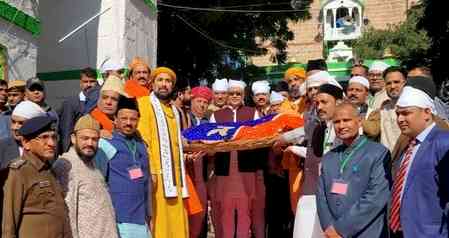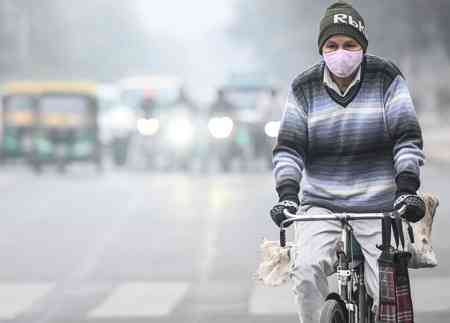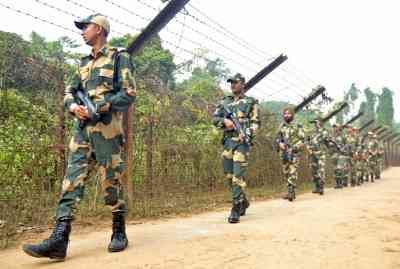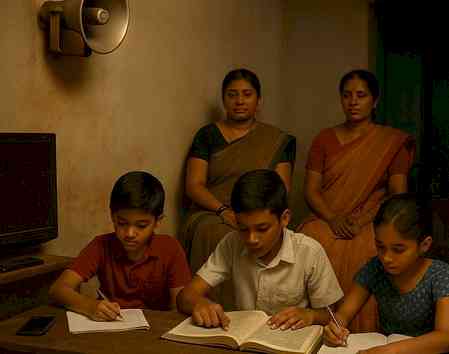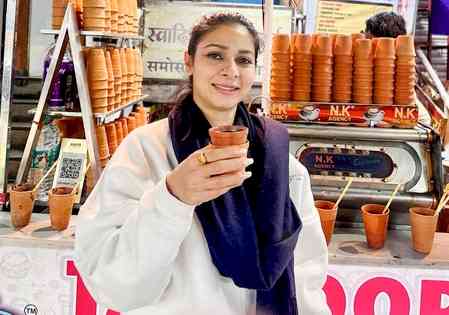SHOW ON MIRZAPUR'S WOMEN WHO DRESSED UP INDIA'S NEW PARLIAMENT TO OPEN IN DELHI
HUMAN NARRATIVES TO UNVEIL CARPET CAPITAL'S MAJOR SPIKE IN WOMEN BECOMING MASTERCRAFTSMEN
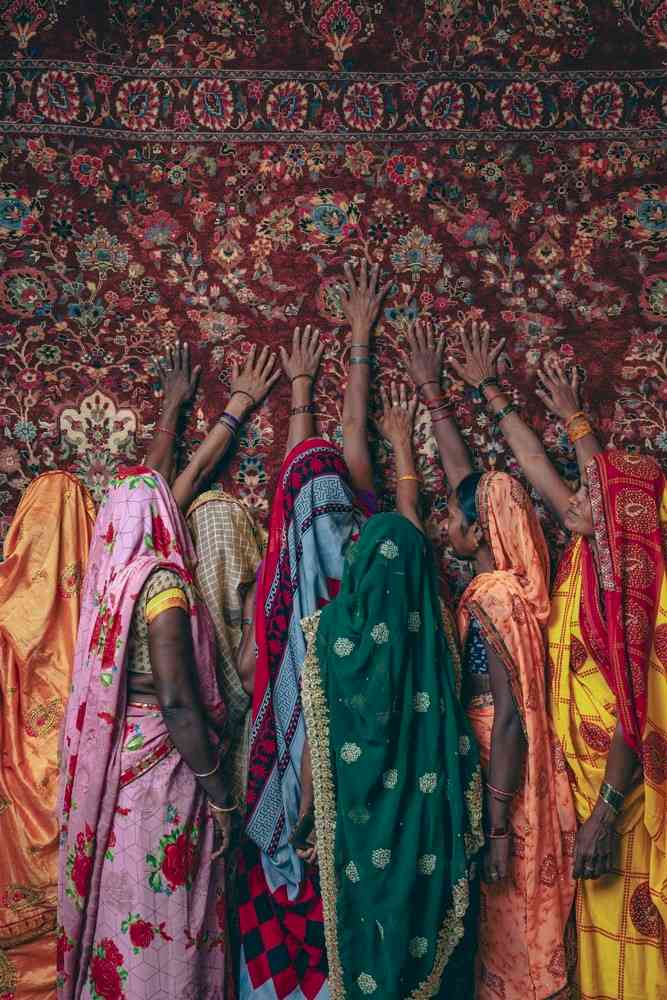
An incredible show of never seen before photographs and human narratives are all set to reveal a phenomenal story of women empowerment playing out in India's carpet capital - Mirzapur, thanks to India's oldest carpet manufacturers - Obeetee.
Fate Lines - How the Thread Changed the Destiny of Mirzapur's Women by journalist and photographer Kounteya Sinha will open privately on July 10 in the hallowed portals of Delhi's Bikaner House after which it can be viewed by the public till July 13.
This incredible repertoire of 65 phenomenal photographs unravels sensational stories of women from the hinterland - the heart of Uttar Pradesh - who fought societal norms and patriarchal practices to come forward and work against all odds - changing the social fabric of the region. None of these women had even stepped out of their homes till 2017. This was the result of a path breaking programme initiated by Obeetee in 2017 which has now seen a 400% increase in women taking up the art of carpet weaving.
In a rare rebellion of sorts to become the breadwinner of their families - unable to make ends meet with a single income of their husbands, these women decided to step out, learn the ancient art of carpet making and have now become the torch bearers of a changing society. Obeetee has till now trained nearly 1800 women under the programme from various regions of Mirzapur.
Data has shown that the majority of their earnings are being spent in sending their children to school and higher education when they themselves are mostly illiterate.
Incidentally, many of these women were part of the team that just recently created a record of sorts - to dress up India's most iconic bastion of democracy.
As many as 900 weavers from the districts of Bhadohi and Mirzapur working for Obeetee spent a whopping 10 lakh man hours to carpet India's New Parliament building - both the houses of the Rajya Sabha and the Lok Sabha.
These women with incredible personal stories hand crafted 158 carpets for the Lok Sabha and 156 for the Rajya Sabha before stitching them into a single carpet in the form of a semi circle to sync with the architecture of each of the Houses spread across 35,000 square feet of area.
They used the laborious and ancient art of hand knotting to create the magnificent masterpieces. The intricacies of the workmanship is so grand that as many as 120 knots per square inch were woven to create the carpets - amounting to over 600 million knots approximately in total.
Rudra Chatterjee, Chairman, Obeetee said "We at Obeetee have been committed for nearly a decade now to work alongside women in their quest to become skilled artisans producing fine hand knotted rugs. We have trained nearly 1800 women in the art of carpet weaving and all of them are now active weavers. Their example is important - to become self-sustainable and financially independent. Their dedication and hard work at display during this program makes us proud".
Sinha who spent weeks on the field discovering the stories of these women said "Till 2016, the women of this region were relegated to a life of anonymity and isolation - their destiny doomed there. But suddenly in 2016, women started going against their families - a rebellion of sorts and wanted to have an identity of their own. Some came forward and volunteered how to make carpets. Word spread like wildfire in all the surrounding villages and women after women started coming out. Today over 1800 women have become master craftsmen for Obeetee weaving the most exclusive carpets. The repertoire of photographs that have been taken by my team of photographers - Rajendra Mohan Pandey, Nilayan Chatterjee and Snehadeep Das will unveil to the world the invisible life of Mirzapur's women weavers who have greatly benefited from Obeetee's path breaking programme giving them a life of dignity and self worth".
The legacy of carpet weaving in Mirzapur dates back to Emperor Akbar himself. As the story goes, Emperor Akbar, known to be a connoisseur of beautiful things, had an exceptional fondness for carpets and decided to bring the finest Persian artists and weavers to India, nearly five centuries ago. During that journey, when they reached Gopiganj, a small town in modern Uttar Pradesh, their caravan was attacked by bandits. The weavers that survived that slaughter took shelter in villages around that area, making Mirzapur - the Mecca of carpet weaving.
Increasing India's female labour force has been a priority for Prime Minister Narendra Modi. According to him, empowering a woman is empowering a nation, especially true for a country like India where 2 out of 3 women are not employed. Modi recently made a clarion call to ensure more women are given the opportunity to become financially independent. According to him, women empowerment is crucial to India's growth. He said that days of seeing women as homemakers have gone, we have to see women as nation builders.
Obeetee was founded around 103 years ago by three British entrepreneurs, soon after World War 1 - the name of the company resembling the initials of their three names. Today, Obeetee has become the most venerable address for the world's finest and most intricate carpets and rugs - working with over 20,000 artisans of the region
According to ILO data, India’s female labour force participation rate in 2021 was lower than the world average at 25.1%. Prime minister Modi has set the government a target to increase it to a 50% female workforce by 2047.
According to the World bank, “no country can develop and achieve its full potential if half of its population is involved in non-economic activities. It is estimated that women in India contribute 17% of the national GDP, as against the global average of 40%".
Angelique Dhama, CEO, Obeetee Retail says "We are proud to have a gender-neutral workforce that recognises the skills of both men and women equally. At Obeetee, we provide the same high-quality weaving training to both men and women, and the results speak for themselves. All our weavers are exceptional at what they do, showcasing their individual sense of color and aesthetics. In the past, when women entering the workforce was not as common, Obeetee took the initiative to provide these women with opportunities for financial independence and moral support. By empowering women, we have greatly contributed to their personal growth".
Gaurav Sharma, Managing Director of Obeetee says when he joined the carpet industry nearly two decades ago, he was amazed to find that there were hardly any women weavers in the workforce. "This was partially because weaving was traditionally taught to boys and not to girls. But most crucially, it was because of the rigid patriarchy that governed village life. To me personally, this was untenable. As I began to understand village norms, I realised that because they considered it improper to sit in close proximity to men who were not from their family, women would never be able to work on commercial looms".
That was when Obeetee thought of a program to train women weavers. "It was not purely altruistic. We were facing a worrying attrition in the weavers’ workforce with many of them migrating to the city in hope of a better life. What we did see was that when these men left, the women were left behind in the villages. These women were smart, had a desire to work, needed the money but had no opportunity. That’s when we started the women weavers training program. It was not an easy journey when we started the program. Even though we were offering free training along with a stipend, women were not coming forward to learn. We had to work hard to convince the elders in the village to let/encourage women to come forward. We decided to provide an attached crèche to make it easier for young mothers to come forward. Once the first few training centres became successful, the program took off," Sharma said.
Most of these women can tie up to 9,000 knots a day, so intricate that it ranges from 15 knots to 300 knots per square inch, sometimes taking a year's laborious work.
Several such carpets adorn India's greatest residential address - The Rashtrapati Bhawan - one of which measure over 450 square metres and contains a whopping 100 million intricate knots.


 City Air News
City Air News 

